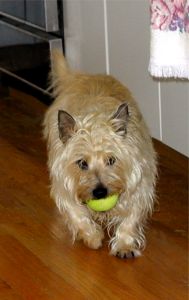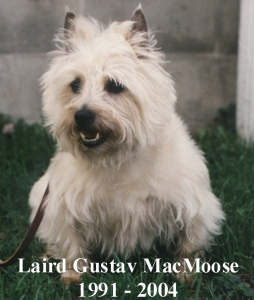<Updated 11DEC20>
< A version of this article was published in the June 2016 issue of Downeast Dog News>
< An updated version of this article was published in the August 2020 issue of Down East Dog News and at https://bit.ly/WhatIFeedAndWhy >
<This topic was also discussed on The Woof Meow Show on 4JUN16 – click to listen>
 Most of you know that I own Green Acres Kennel Shop and that we sell pet food. As such, it is not uncommon for someone to walk into the store and ask me, “Don, what food do you feed your dog?” Based on experience, I find that many people expect me to say “I feed my dog brand X because it is the best food for all dogs!” Sadly, when asked the same question, this is often the answer they hear from pet stores, breeders, shelters, and even veterinarians. Since that is not what they will here from me, and since my response will not be that simple, I thought I would answer it here.
Most of you know that I own Green Acres Kennel Shop and that we sell pet food. As such, it is not uncommon for someone to walk into the store and ask me, “Don, what food do you feed your dog?” Based on experience, I find that many people expect me to say “I feed my dog brand X because it is the best food for all dogs!” Sadly, when asked the same question, this is often the answer they hear from pet stores, breeders, shelters, and even veterinarians. Since that is not what they will here from me, and since my response will not be that simple, I thought I would answer it here.
If someone sells or even gives away pet food, he or she has a financial interest in which food they recommend. Green Acres’ sells pet food, and we gain financially when you purchase pet food from us. However, one of the things that I believe makes us different from many purveyors of pet food, is that once people get to know us they understand that all of us in the store care greatly about nutrition and want to help you find the food that will be the best for your dog and your budget. In fact, because we all have different dogs, with different needs, if you ask each staff member what they feed their dog you will discover you will get different answers. There is no single food that is the best choice for all dogs and all situations.
So when I am asked this question I typically respond with; “I feed Muppy, a variety of foods from a variety of manufacturers with a goal of rotating the primary protein source every time I purchase food.”
Twenty years ago I predominantly fed my dog’s kibble. Additionally, I have fed; canned food (wet food), homemade diets, frozen raw diets and freeze-dried raw diets. In 2002, we started selling Steve’s Real Food for Pets, a commercially prepared, frozen, raw food in the store. At the time, we had five dogs, so economics dictated that we fed a raw meal once a day and kibble once a day. When we were down to two dogs, we switched to feeding 100% raw. I made this choice after a great deal of research.
My fundamental reason for feeding a raw diet is that it is primarily composed of muscle meat, organ meat, and bone. Depending on the brand there is very little or no soluble carbohydrates in these foods. A diet with little or no carbohydrates is the natural diet of a carnivore like a dog or a cat. Even the best kibble is going to be high in carbohydrates which are not a necessary nutrient for dogs or cats. Our Golden Retriever Tikken lived to be 16, and I attribute that was partially due to the nutritional choices that we made for her.
When Tikken passed, we decided that we would down-size for our next dog. Our target was a dog weighing between 20 and 30 pounds. We did that for two reasons. One, both my wife and I have some back problems and carrying a 50lb dog (Tikken) up and down the stairs the last year of her life was not always easy. However, even more importantly to me, I wanted to make sure that we would always be able to afford to feed our next dog the best diet possible throughout her life. That is easier with a small dog who eats less.
Since the day Muppy joined us, just over three years ago, she has been fed a commercially prepared, frozen raw diet, which we occasionally supplement with canned food or freeze-dried food. She is fed a variety of frozen raw foods made by Bravo, Steve’s Real Food for Pets, and Vital Essentials. We rotate the primary protein source every time we purchase food and also rotate between brands because each has advantages. Vital Essentials and Steve’s both offer their formulas in small nuggets which make portion control easier. We also keep freeze dried diets from Bravo and Vital Essentials on hand for those occasions when we fail to defrost Muppy’s frozen ration in advance of meal time. We vary protein sources at every purchase, rotating between beef, chicken, pork, turkey, and turducken. Additionally, we supplement her meals with freeze-dried green tripe, coconut oil, a probiotic and Wysong Dentatreat.
So that is how I answer the question; “Don, what food do you feed your dog?” Is that what I would suggest you feed your dog? What I recommend will depend on your dog’s nutritional needs and what you are looking for in a dog food because there is and never will be a single brand of food that will be the best food for every dog.
Recommended Resources
Articles on Don’s Blog (http://www.words-woofs-meows.com)
Pet Nutrition – Should I Feed My Pet A Raw Diet? – http://blog.greenacreskennel.com/2016/09/11/pet-nutrition-should-i-feed-my-pet-a-raw-diet/
Reflections on 20 Years as a Pet Care Professional – Changes in Pet Food and Nutrition – part 1 – http://blog.greenacreskennel.com/2015/11/23/reflections-on-20-years-as-a-pet-care-professional-changes-in-pet-food-and-nutrition-part-1/
Reflections on 20 Years as a Pet Care Professional – Pet Food and Nutrition – part 2 – http://blog.greenacreskennel.com/2015/12/15/reflections-on-20-years-as-a-pet-care-professional-pet-food-and-nutrition-part-2/
Nutrition – Which Brand of Pet Food is the Best? – Part 1 – http://blog.greenacreskennel.com/2014/06/01/nutrition-which-brand-of-pet-food-is-the-best-part-1/
Nutrition – Which Brand of Pet Food is the Best? – Part 2 – http://blog.greenacreskennel.com/2014/07/01/nutrition-which-brand-of-pet-food-is-the-best-part-2/
Nutrition – Which Brand of Pet Food is the Best? – Part 3 – http://blog.greenacreskennel.com/2014/08/01/nutrition-which-brand-of-pet-food-is-the-best-part-3/
Nutrition – Why Rotating Diets Makes Sense – http://blog.greenacreskennel.com/2012/05/04/nutrition-why-rotating-diets-makes-sense/
Nutrition – Determining True Pet Food Costs – http://blog.greenacreskennel.com/2008/11/08/nutrition-determining-true-pet-food-costs/
Book Review – Ruined by Excess, Perfected by Lack – The paradox of pet nutrition by Richard Patton – http://blog.greenacreskennel.com/2016/03/16/book-review-ruined-by-excess-perfected-by-lack-the-paradox-of-pet-nutrition-by-richard-patton/
Pet Nutrition –Vital Essentials® Pet Food – http://blog.greenacreskennel.com/2016/08/14/pet-nutrition-vital-essentials-pet-food/
Podcasts from The Woof Meow Show (http://www.woofmeowshow.com)
What do you feed your pets? – http://traffic.libsyn.com/woofmeowshow/WoofMeowShow2016-06-04-What_do_you_feed_your_pets.mp3
Podcast – Pet Nutrition with Dr. Richard Patton – http://blog.greenacreskennel.com/2016/04/03/podcast-pet-nutrition-with-dr-richard-patton/
Podcast – Raw Diets and the Carnivore Meat Company-Vital Essentials-Dee Ferranti and Jodi Langellotti – http://blog.greenacreskennel.com/2016/04/17/podcast-raw-diets-and-the-carnivore-meat-company-vital-essentials-dee-ferranti-and-jodi-langellotti/
Podcast – The Rationale for Feeding Pets Raw Foods with Bette Schubert from Bravo Pet Foods – http://blog.greenacreskennel.com/2016/08/03/podcast-the-rationale-for-feeding-pets-raw-foods-with-bette-schubert-from-bravo-pet-foods/
Podcast – Bravo’s Raw Pets Food, Treats, Chewables and Bones with Bette Shubert – http://blog.greenacreskennel.com/2013/08/10/podcast-bravos-raw-pets-food-treats-chewables-and-bones-with-bette-shubert/
Podcast – Feeding Your Pet A Raw Diet with Gary Bursell of Steve’s Real Food for Pets – http://blog.greenacreskennel.com/2013/03/16/podcast-feeding-your-pet-a-raw-diet-with-gary-bursell-of-steves-real-food-for-pets/
Podcast – Feeding Your Pet A Raw Diet with Nicole Lindsley of Steve’s Real Food for Pets – http://blog.greenacreskennel.com/2013/03/23/podcast-feeding-your-pet-a-raw-diet-with-nicole-lindsley-of-steves-real-food-for-pets/
Books
Beginnings – Getting Your Dog and Cat Started on a Raw Diet by Melinda Miller and Honoring Your Cat’s Natural Diet by Terri Grow <Click here for a free download>
Natural Nutrition for Dogs and Cats – The Ultimate Diet – Kymythy Schultze
Ruined by Excess, Perfected by Lack – Dr. Richard Patton
See Spot Live Longer – Steve Brown and Beth Taylor
The Truth About Pet Foods – Dr. Randy Wysong
Unlocking the Canine Ancestral Diet – Steve Brown
______________________________________________________________________________
Don Hanson is the co-owner of the Green Acres Kennel Shop (greenacreskennel.com) in Bangor. He is a Bach Foundation Registered Animal Practitioner (BFRAP), Certified Dog Behavior Consultant (CDBC), Associate Certified Cat Behavior Consultant (ACCBC) and a Certified Professional Dog Trainer (CPDT-KA). He produces and co- hosts a weekly radio show and podcast, The Woof Meow Show heard on The Pulse AM620 WZON and streamed at http://www.wzonradio.com/ every Saturday at 9 AM. A list of upcoming shows and podcasts of past shows can be found at www.woofmeowshow.com. Don also writes about pets at his blog: www.words-woofs-meows.com.
©11DEC20, Donald J. Hanson, All Rights Reserved <Click for Copyright and Use Policy>









